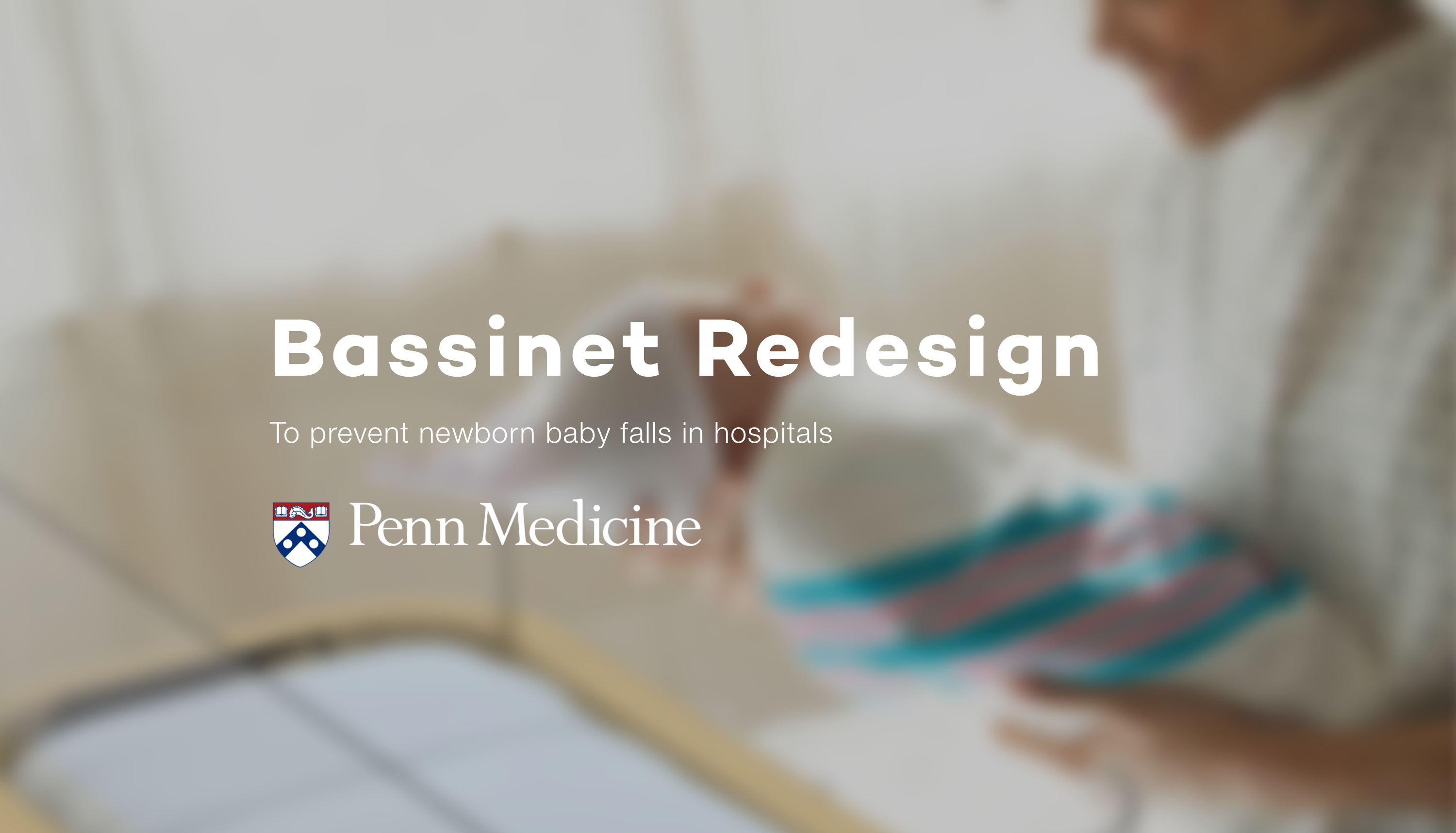About the project
In our IPD552 Problem Framing course, we collaborated with Penn Medicine's Center for Health Care Innovation. Our client, the Hospital of the University of Pennsylvania (HUP), tasked us with addressing the problem of newborn baby falls. These incidents usually occur in the middle of the night when a tired mother falls asleep while holding or breastfeeding her baby, or struggles to transfer the infant to a crib. At HUP, such incidents occurred a few times each year, and they could be quite traumatic for everyone involved.
To address this issue, we proposed a re-designed bassinet, which HUP approved and expressed interest in implementing within the hospital. Other members of our team continued the project, moving it through the engineering and manufacturing stages.
PennDesign News | Designing for Better Health Care Starts at Birth
Team Info
Time
Jan, 2016 - May, 2016
Team Member
Xiaoye Zhang, Jessica Soe, Carissa Lim
Project Info
Course
IPD552 Problem Framing
Program
Integrated Product Design, University of Pennsylvania
Client
The Hospital of University of Pennsylvania
Role
User Interview
Problem Framing & Ideation
Product Design
Tools
Rhinoceroes
Keyshot
Research
The Environment
We conducted interviews with mothers, nurses, and support personnel, including the fathers of newborns at HUP, in order to gain a better understanding of the issue.

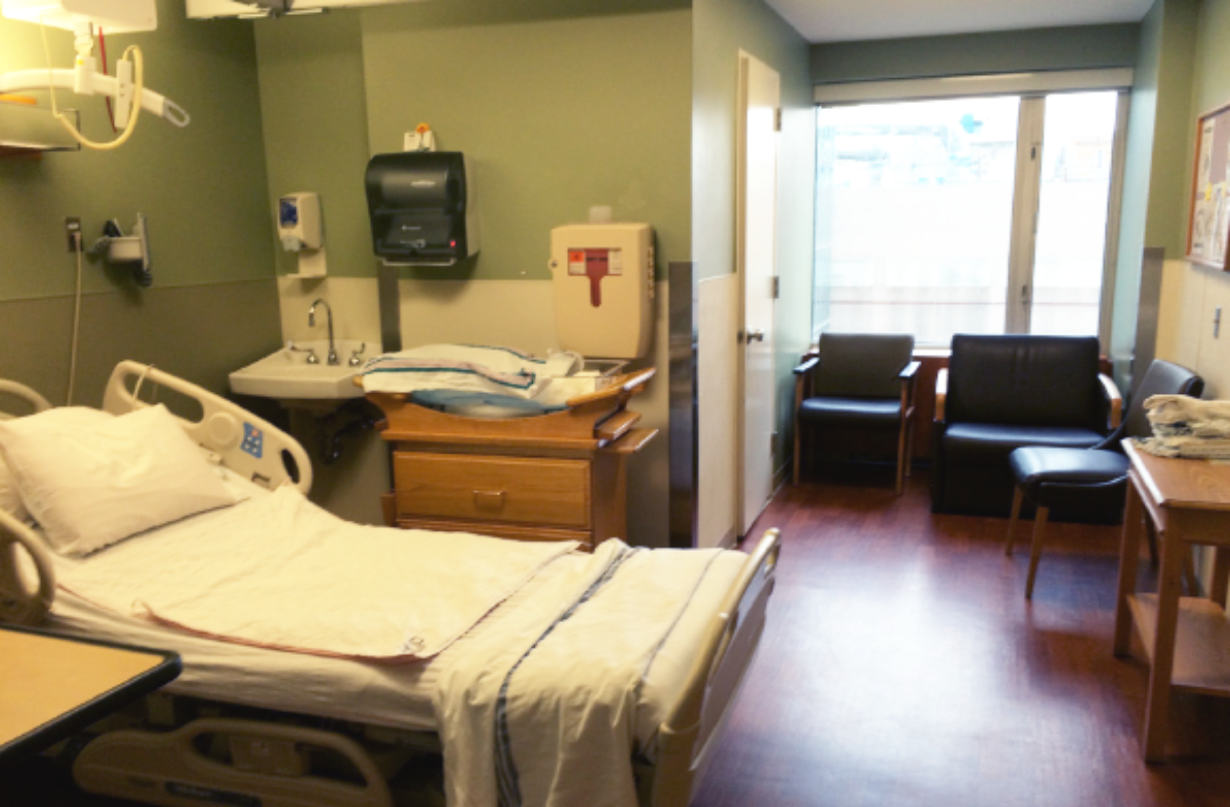

The Problem

The Birth-giving Process at HUP
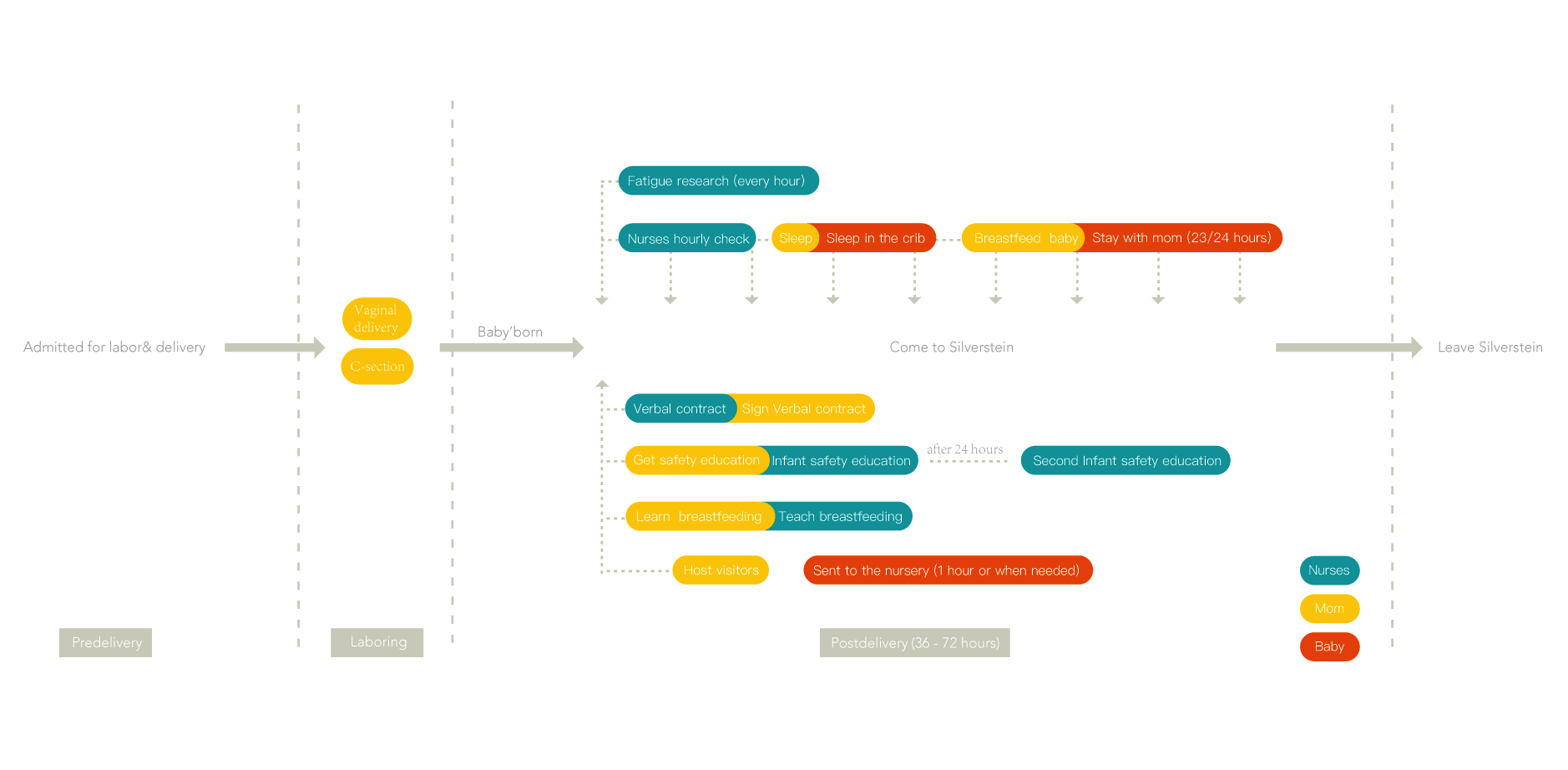
Interview
We interviewed 12 mothers, 8 support people and 5 nurses at HUP.


Mother #5
First-time mother | Vaginal birth | Breastfeeding | Works at Columbia
- Sent her husband home, because she didn’t feel like he would be useful.
- “The baby cries because the crib is uncomfortable. So, I wait for the baby to fall asleep in my arms before putting him back in the crib.”
- I don’t want to call for the nurse, because I want to do things myself. Because when I’m home, I won’t have the extra help.

Mother #7
First-time mother | C-Section | Breastfeeding | Works at HUP
- Made an improvised sling to carry her baby, because she felt bad bothering the busy nurses.
- “I did not participate in the maternal fatigue study, because it’s like being on call.”
- “I can stay awake, because if I fall asleep, there’s such thing as a ’baby alarm clock’ that will cry for attention.”
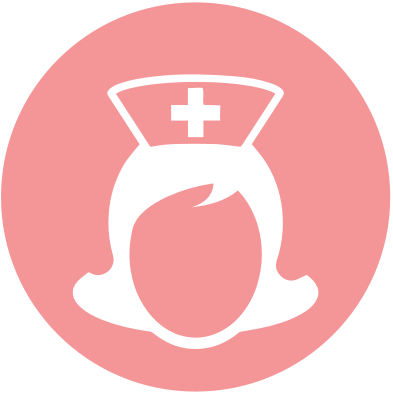
Nurse #2 #3
Hourly rounding; breastfeeding education; bedside reports
- “It gets really busy during hourly rounding, so it gets a bit difficult.”
- “The support person is supposed to spend the night, help out, and not just take up space.”

Support person #3
First-time father | Bottle feeding | Vaginal birth
- Up all night the first night and got six hours the next night.
- “The chair is too far away from mom and the baby, so the nurses let me sleep in the empty second bed.”
- “I’m there for the nurses because there are always busy. I change diapers and get mom whatever she needs.”
observations
EVIDENCE #1
- “She does everything. I just sit here and smile.”
OBSERVATION #1
- Support people are often asleep or unsure what to do when needed during post-delivery.
CONCLUSION #1
- The support person in the delivery room should feel involved in the process, as they may not always know the appropriate actions to take.
EVIDENCE #2
- The new mother wanted to take the baby from the crib, but the action is very painful. So, she made a makeshift sling to carry the baby from the crib to the bed.
OBSERVATION #2
- The mother’s turning action of transporting the baby to and from the hospital crib is very uncomfortable.
CONCLUSION #2
- Mothers who need a way to take the baby in and out of the crib need an effortless and secure way to move the baby.
EVIDENCE #3
- The nurse went to check the room and everyone was awake and attentive. Seven minutes later, everyone is the room was asleep and the baby had fallen from the mother’s arms.
OBSERVATION #3
- Mothers underestimate their fatigue levels.
CONCLUSION #3
- Mothers need a way to get uninterrupted sleep to mitigate fatigue while continuing to be monitored by the nurses.
INSIGHTS
For mothers:
- Mothers don't ask for help enough
- Mothers underestimate their fatigue
For support people:
- Support people are oftern unsure what to do post-delivery
For nurses:
- The reality and perception wait times are very different (nurses think it's timely while mothers think it takes too long)
Our solution
Storyboard
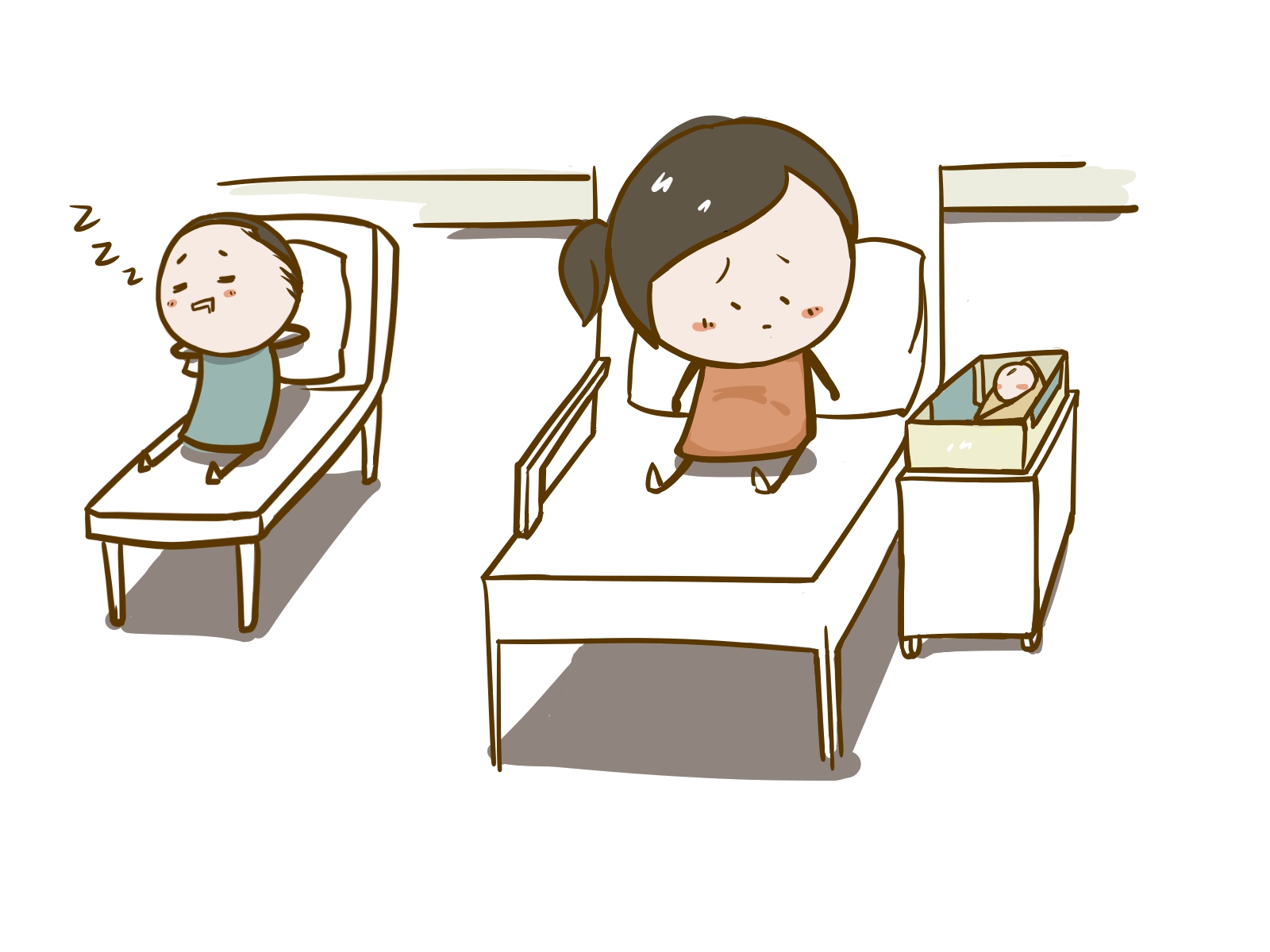
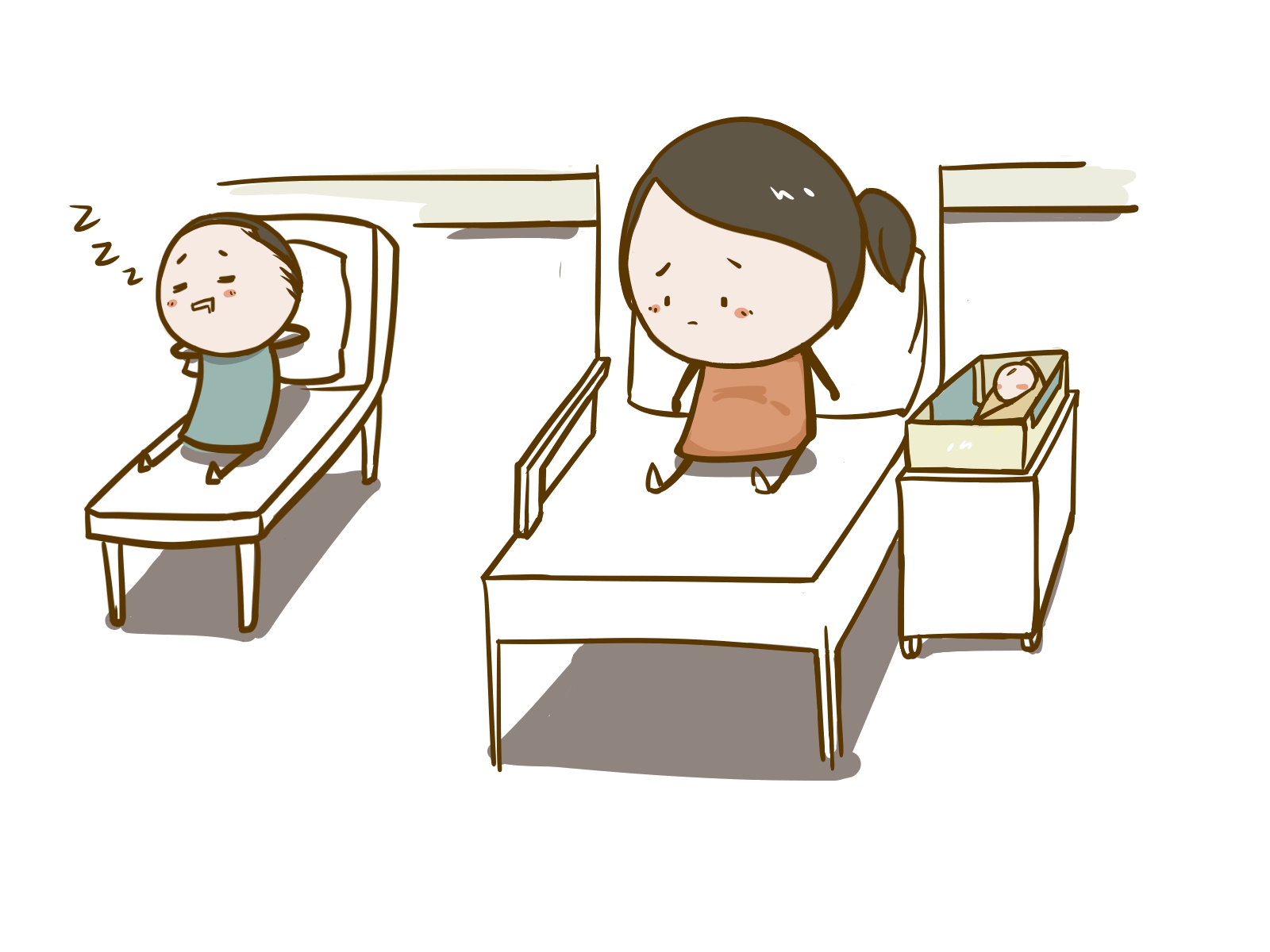

After analyzing our findings, we determined that we could reduce the occurrence of newborn falls by helping mothers transfer their babies more easily from the crib. To achieve this, we re-designed the bassinet to minimize the effort required by mothers to move their babies, allowing them to become more self-sufficient and decreasing the likelihood that they would fall asleep while holding their babies.
We drew inspiration from the hospital bedside table, which can be rotated and moved over the bed with ease.
Sketch
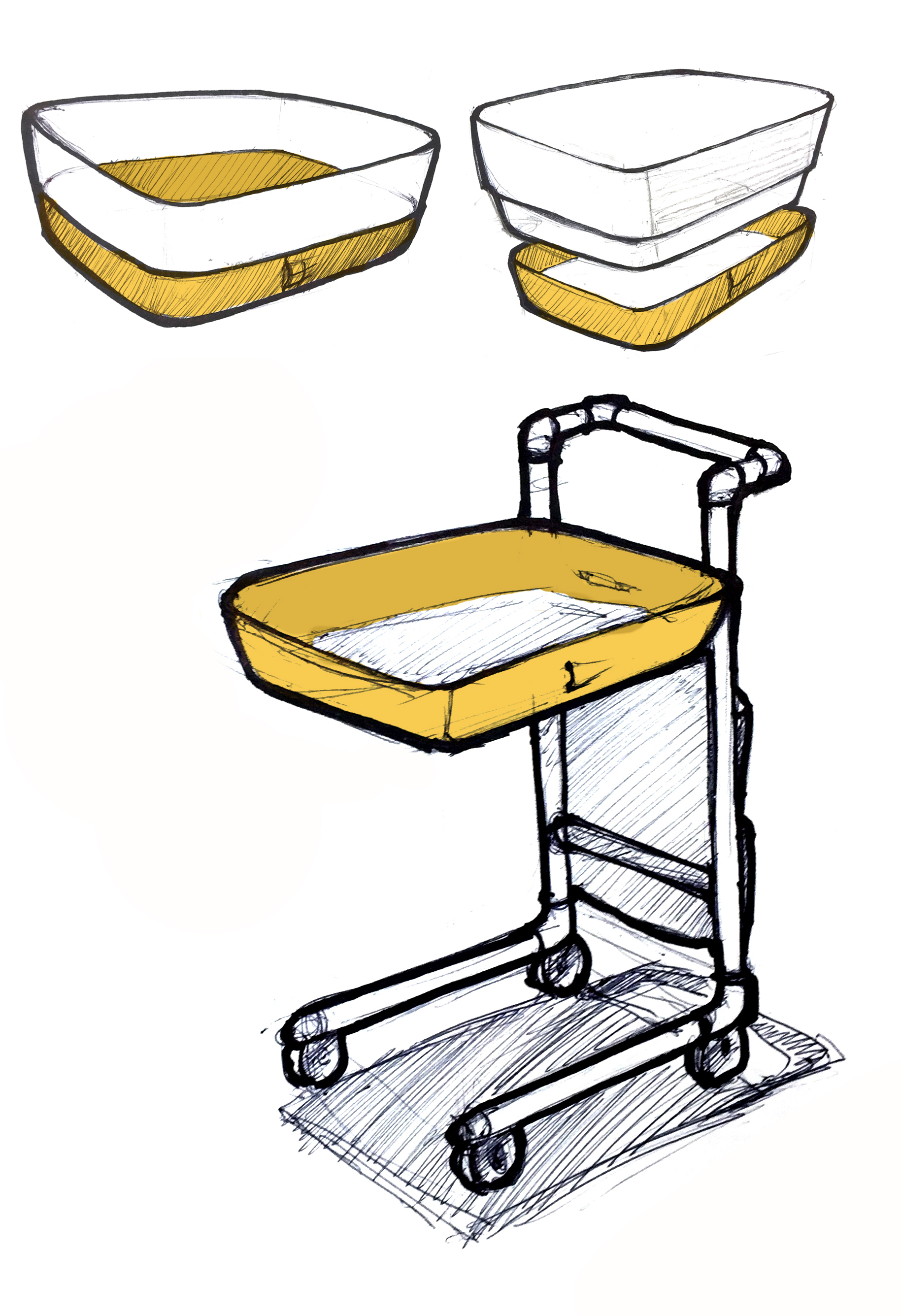
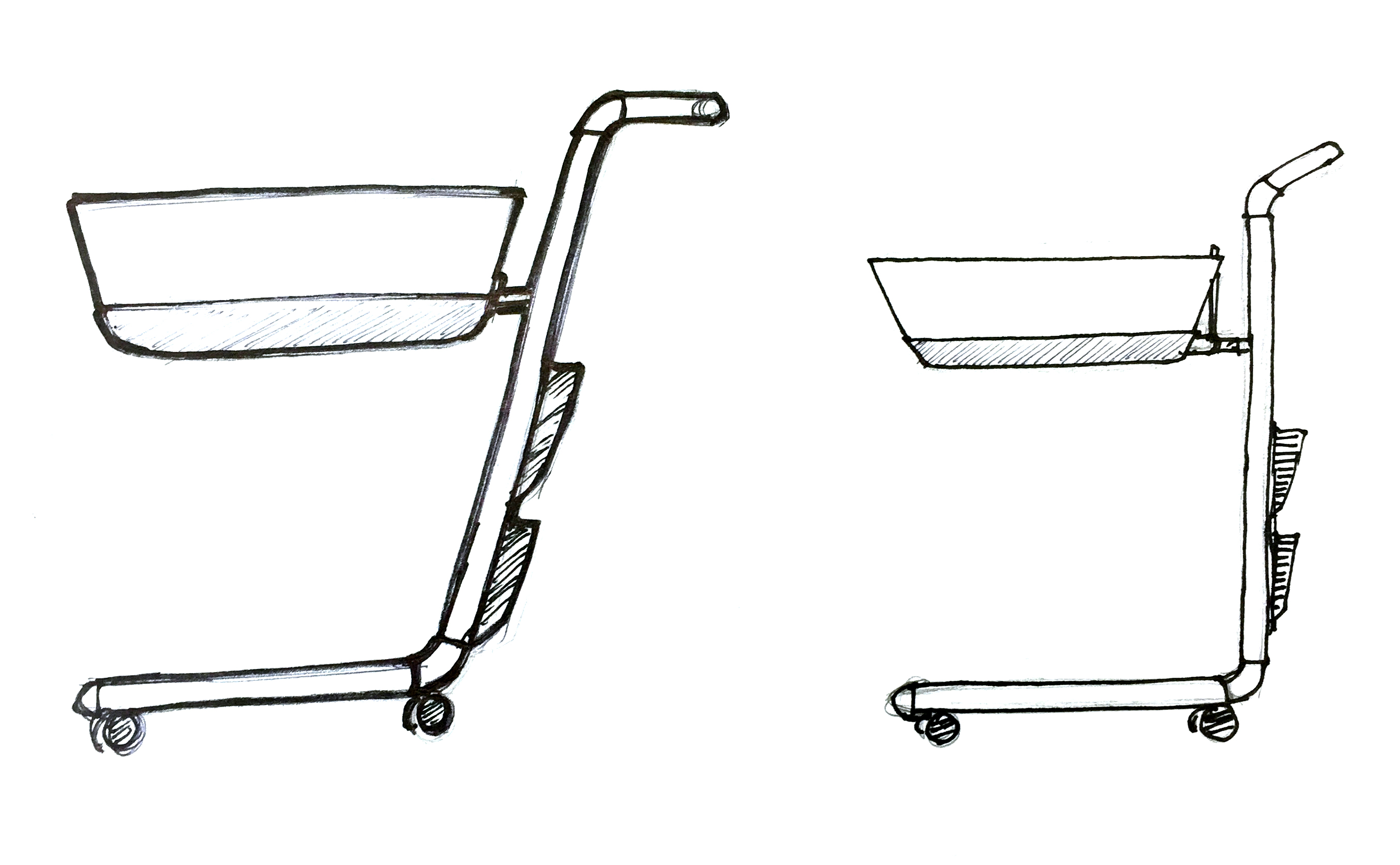
Rendering
In the final rendering, a door is placed on the side of the bassinet. By pulling the handles, a mother can easily turn the bassinet around and turn the door towards herself. She then puts down the door and let baby slowly "slide" out.
The height of the bassinet is adjustable and storage space is added to the bassinet.




Prototype and test
We created a prototype of the redesigned bassinet and tested it in a hospital setting to determine the appropriate size and to test the interaction between the mother and the crib. We obtained feedback from nurses and mothers and the results were positive. HUP was interested in implementing our idea and two of my teammates continued the project to the engineering and manufacturing stages.


